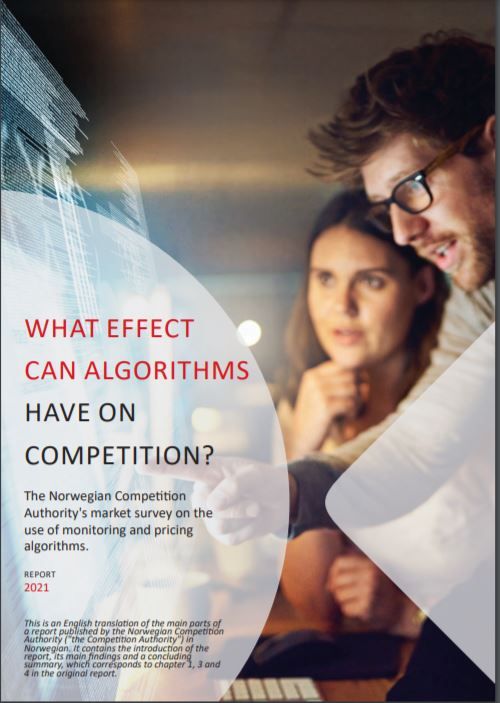A survey conducted by the Norwegian Competition Authority shows that more and more companies in Norway use monitoring and pricing algorithms. The Authority now encourages companies to be aware that the use of algorithms may also cause harm to competition and lead to higher prices for consumers.
Technological developments have given companies access to large amounts of data. At the same time, increased processing power means that companies can use algorithms to orientate themselves in the marketplace and adapt their market conduct accordingly. In a new survey, the Norwegian Competition Authority has examined the use of monitoring and pricing algorithms in Norway. Such algorithms are essentially two types of software that can be used to collect market data, such as price information, and to automatically adjust prices.
Competition is important to ensure consumers access to the best possible goods and services at the lowest possible price. Algorithms can have pro-competitive effects, for example by making it easier for consumers to compare prices. However, there is also a concern that the use of algorithms may harm the competitive process.
Two types of algorithms
The Norwegian Competition Authority’s survey shows that 55 per cent of the companies surveyed use so-called monitoring algorithms. This means that they can collect information from their competitors’ online stores, and obtain information about prices, the range of products on offer, stock levels, and more. Hence, through the use of monitoring algorithms, competitors can gain access to detailed and updated data about each other’s activities.
Twenty per cent of the companies in the survey use so-called pricing algorithms, which automatically set prices. Since prices change automatically, it becomes possible for a company to react very quickly to changing market conditions. This also means that companies can quickly adjust their prices in response to their competitors’ price changes.
– The use of algorithms can make markets more transparent, which in turn makes it easier to predict how competitors will act in the market. This can result in reduced competitive pressure in the markets concerned. The Competition Authority will therefore encourage market players, who either have used or plan to use algorithms, to be conscious about why they prefer a given algorithm, and what effects this algorithm may have on competition, says Senior Adviser Cathrine Evertsen in the Norwegian Competition Authority.
The results also show that in some industries it is common to use pricing algorithms, while in other industries few companies use this type of tools. Only a limited number of the companies surveyed state that they use self-learning algorithms.
May harm competition
If companies use algorithms primarily with a view to achieve more stable or predictable market conditions for the company, and not with a view to offer consumers better prices or increased availability of goods and services, this may indicate that the implementation of the algorithm ought to be reconsidered or that the relevant algorithm should be adjusted. This will especially be the case in markets where conditions are already conducive to coordination, for example markets with a limited number of competitors, stable demand, a balance between market participants and homogeneous products.
Algorithm developers are also encouraged to take account of the competitive implications of various functionality that they incorporate into this type of tools.
English translation of the report is available for down load here >>
NB! This is an English translation of the main parts of a report published by the Norwegian Competition Authority (“the Competition Authority”) in Norwegian.
Full version of report in Norwegian >>
Facts
• The market survey was conducted during the spring and autumn of 2020.
• The following respondents gave input to the survey:
– 51 market players in various sectors of the economy selected by the Authority to answer the Authority’s questionnaire. This included retailers in sports equipment, clothing, cosmetics, electronics, building materials, tools, interior products, kitchens, furniture, groceries, providers of car rental services and flights as well as pharmacies and opticians. The response rate of the survey was 94%.
– Four algorithm providers
– Two price comparison services providers
• Attention is drawn to the fact that the sample of respondents is not large enough to draw conclusions about how large the prevalence of algorithms actually is.
• The survey has examined the use of two types of algorithms:
– Monitoring algorithms: Which are used to get updated and detailed information about, for example, prices and stock levels of competitors.
– Pricing algorithms: Which updates prices automatically.
• According to the survey, few market players use self-learning algorithms, i.e. algorithms that, by way of artificial intelligence, find out on their own how they best can solve an overall problem or achieve an overall goal, such as maximizing profits.
• Similar surveys have been conducted by the EU, Portugal and Denmark.
33395

Contact information
Press phone: + 47 47 66 77 77.